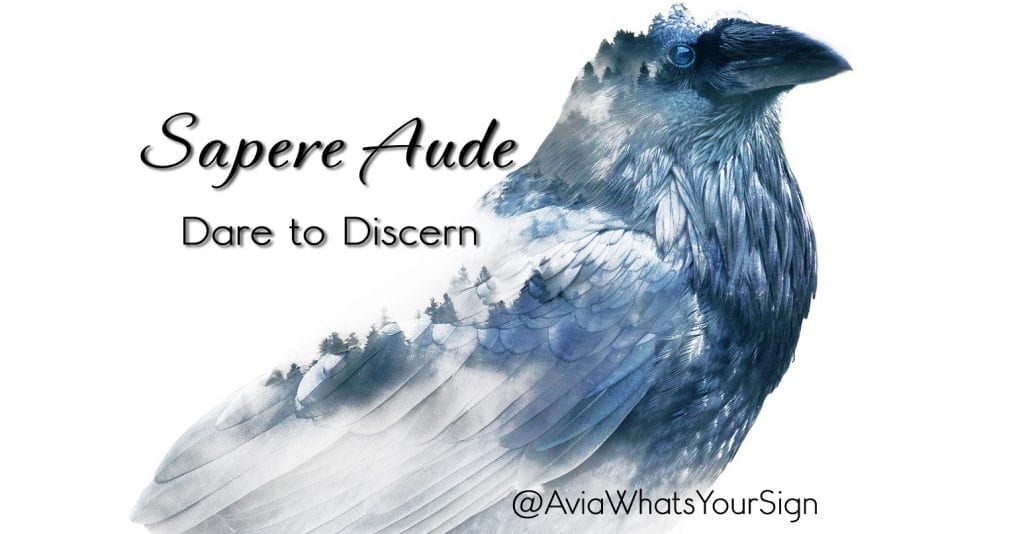Last Updated on June 7, 2024 by Avia
Exploring Graduation Traditions and Their Meanings
My eldest niece is walking across the graduation stage today! Huzzah!!! She’s worked her buns off for this moment of recognition and I’m proud as a peacock to see her graduate. As our family has been making preparations to celebrate this big day, I couldn’t help but get curious about graduation traditions and their meanings.
Like…What’s up with those funky-looking hats? And why do graduates move those dangly tassel thingies from one side of their hat to the other after receiving their degree or diploma? What does it all mean? Clearly, I was plagued with questions and curiosities, so I had to start cracking my own books to study the meaning of graduation symbols, ceremonies, and commencement!
While some graduation traditions and their meanings have very clear origins in history, other meanings are steeped in mystery. And of course, for every symbolic meaning, there is inevitably more than one source and opinion. So bear in mind, I’ve dug up facts where I could find them, but I’m also including bits of graduation trivia I’ve picked up from theories and thoughts shared by others along the way.
Table of Contents
- Exploring Graduation Traditions and Their Meanings
- Meaning of Square Graduation Caps
- Meaning of Graduation Tassels
- Symbolic Nitty Gritty About Right-to-Left Turning of the Tassel
- Meaning of Graduation Robes and Hoods (Surprising Origins)
- Another Note About Hoods
- Closing Thoughts About Graduation Traditions and Their Meanings
- Other Articles of Interest on This Website

Meaning of Square Graduation Caps
The tradition of wearing a hat as a symbol of scholarly distinction has been around ever since educational institutions started recognizing a student’s progress from neophyte to an expert in academia. But c’mon…could this headgear look any more funky? Why is it square? Well, originally these odd hats were not square at all. In Medieval Europe, scholars wore skull caps without a brim. We have the oldest university in the English-speaking world, Oxford U., to thank for the evolution of the graduation cap we are familiar with today. Let’s break it down…
Hip to be Square: It’s been said that the square-shaped hat we see during graduation ceremonies today mimicked the famous quad at Oxford. The quad is an architectural phenomenon shared by many universities today, but Oxford is considered the originator of this centralizing feature on college campuses around the world. It’s a square patch of greenery, often with trees. A campus quad is considered to be a serene, neutral place where students, alumni, and faculty are encouraged to gather, exchange ideas and socialize in a neutral, non-threatening environment.
It breeds the spirit of sharing knowledge without judgment. This is the same spirit that is imbued in the quad-centric, square-shaped graduation cap. The square hat replicates the academic foundation and the structure of a college education that provides a solid scaffolding for life as well as the power of opening minds to new ideas.
Masons and Mortarboards…Wait, What?: Why are graduation hats also called mortarboards? It’s a brick-laying thing. Bricklayers used a flat, square plane to pile mortar on (that grey, gloopy stuff that binds bricks together).
Sure, the graduation cap resembles a mortarboard, but I think the nickname is symbolic. Why? Because I’ve heard tell that Freemasons were responsible for the square-shaped grad caps we see today. Freemasons are known for their secret society stuff, but at their core, they were stonemasons and bricklayers. Much of their societal foundation is based upon measurement and structural elements to provide a standardized system of knowledge and belief.
Masons were responsible for building some of the most impressive cathedrals and buildings from the Middle Ages and beyond. So what’s the connection? Well, symbolically speaking, the square is a symbol of foundations, structure and stability. An education provides all of these. So, the square-shaped mortarboard equates to building a structure in life through accomplishing a coveted level of education.

Meaning of Graduation Tassels
Tassels have been a symbol of distinction since Biblical times. In fact, the Israelites sewed tassels in the corners of their garments to signify the commandments as well as acknowledge holy submission to god. From military honors to recognition of graduations, tassels are big symbols of respect and accomplishment. Let’s tackle this tassel thing some more…
Color Me Graduated!: Traditionally, the color of a graduation tassel was (and mostly still is) black or white. However, as time and traditions evolved, color meanings were assigned to tassels according to academic majors or even school colors. For example, a college graduate sporting a purple tassel indicates their accomplishment of a law degree. Wiki has a tassel color chart here so you can spot the field of study of any graduate during commencement.
Left? Right? Left, Right, Left? I’m So Confused!: I have troubles walking and chewing gum at the same time, much less figuring out my left side from my right (my marching band days were hell, I’m woefully uncoordinated). The “Turning of the Tassel” (that’s what it’s called) is a relatively new ritual in commencement ceremonies. Which side the tassel is turned upon the cap varies according to school and degree of graduation.
Traditionally, the tassel originates on the right side of the graduation cap and is moved to the left side upon receiving a diploma. The timing of the turning of the tassel differs. My niece’s graduating class (for her master’s degree) was done en mass before she and her grad-compatriots walked the stage. However, I distinctly remember some high school graduations in which the tassel was turned the moment a grad was handed their degree. So I suppose it’s all up to local traditions as to when the tassel is turned, but I have thoughts on why it is turned, so read on if you’re interested…

Symbolic Nitty Gritty About Right-to-Left Turning of the Tassel
While I couldn’t pinpoint the origin of the tassel-turning custom, I am clear about the symbolism behind the act…and I love the ancient connections between moving the dangle-dongle from the right side to the left. Why? Because right and left associations have strong symbolic implications …especially when contemplating hand symbolism in terms of giving and receiving.
To explain…here’s the breakdown of right and left symbolism…keep in mind, traditionally, the tassel begins on the right side and is moved to the left side after graduation is recognized…
The right side, where the tassel originates – traditionally represents aspects such as:
- Assertiveness
- Drive
- Consciousness
- Action
- Logic
- Attaining
Conversely, the left side (where the tassel is moved upon graduation symbolizes stuff like:
- Patience
- Satisfaction
- Intuition
- Practice
- Emotion
- Giving
Can you see the difference? Can you feel why the tassel (symbolically) switches position? Here’s a another breakdown…
As a student, there is (ideally) motivation, work, action, drive, logic…push, push to achieve and attain…it’s very aggressive energy. This is right-sided mentality (where the tassel is placed traditionally before official graduation) is about assertion, legwork, and getting into action.
On the other hand (the left side, that is), there is an a deep aspect of satisfaction, emotion, evolution, reception (receiving), and basking into a phase of life that has received attainment and is now able to flow more fluidly and freely. This left-affiliated energy is a softer (less aggressive) essence that sums up the feeling of satisfaction and relief at finally achieving something one has worked so hard for. Makes sense, eh?
As a side-note, I especially appreciate the “attaining vs giving” symbolism here. When on the right side, the tassel represents that motivation to achieve…but when the tassel is flipped to the left side, it is symbolic of attaining at a level when one is capable of giving to the community. And isn’t that what education is all about? Retaining knowledge so it can be shared and utilized to better society? Just think’.

Meaning of Graduation Robes and Hoods (Surprising Origins)
The use of robes to indicate status has been going on since the first skilled caveman skinned a bear and donned the animal hide to announce his standing in the clan. I’m not saying graduation robes originated from bear skins or cavemen…I’m just stating a common thread in human history.
For whatever reason, sporting a bespoke robe has been a sign of royalty, accomplishment, achievement, or rank since pre-history, and the robe-wearing tradition continues to this day in graduation ceremonies.
Once again, we can thank Oxford University and the Middle Ages for the robes we commonly see during commencement ceremonies today. The trend was started in the 12th century in Europe to denote one’s following into religion and/or field of study. Robes back then were typically black or brown and when viewed by common lay folk, it left an impression like: “Okay this dude has this robe, so he’s all into his studies and must be a biggety wiggety.” BTW, I say ‘dude’ here because men were the dominating gender who followed academic pursuits in those early years…thankfully nowadays women are equally biggety wiggeties! Rock on!
At any rate, the concept of wearing a robe and hood is all about distinguishing the educated or erudite apart from all the rest. It’s an elitist thing, but also a humbling garment as it has roots in ancient traditions. The robe and hood in graduation ceremonies have changed over the centuries, but the concept is still the same.
At the crux of it, robes and hoods are a way to identify a group of people who have a common bond and devotion for the pursuit of knowledge. It indicates a camaraderie as well as a unified society that is committed to a collective ideal of advancement and expansion for the betterment of society.
Another Note About Hoods
As an interesting side note, I’ve traced back graduation hoods as early as Druid and Greek ceremonies that mark milestones in one’s educational accomplishments. Very often, those who have earned (or been endowed) with special knowledge or powers were compelled to shave their heads. Head-shaving was (and still is) a standard practice among monks as well as ancient seers and wise people in various cultures.
As you might imagine, shaving one’s head makes for a chilly dome on a cold day…hence the invention of hoods. Over time, the hoods caught on and became woven into graduation traditions and their meanings. While hoods might not be needed when your commencement is in 100-degree weather while graduating from Texas A&M…it is a long-held tradition that is still evident today thanks to early druids, monks, and shamans. Don’t you just love historical symbolism?? 🙂
Closing Thoughts About Graduation Traditions and Their Meanings
There are more traditions I haven’t included here, but I’ve covered the common sights featured in most commencement ceremonies. I hope this article on graduation traditions and their meanings proves insightful and revealing as you or your loved one enters into the honorable realm of commencement.
I extend sincere congratulations to all of you who are graduating this year. Your efforts are worthy of acknowledgment and I commend you for all your hard work. I also want to give a shout-out to my niece…YOU MADE IT! I’m so proud of her, and even more pickled pink to see her advance to her doctorate degree! Rock on gurl! Way to crush the academia scene!
In closing, thanks for indulging my curiosities about commencement symbolism and rituals (and putting up with my bragging rights about my nifty niece). Sending you all good graduation vibes.
Mighty brightly,

© Copyrighted. All Rights Reserved.
Supercharge Your Creativity With These Amazon Selections
Other Articles of Interest on This Website

Symbolic Meaning of Choice
Have you ever considered your choices are symbolic? I think they are, and that’s why I wrote this article on the symbolic meaning of choice. What if we can dig deeper into the meaning of our choices and get hard-core guidance from our findings? Check it out, I think you’ll be intrigued. Find out more about the symbolic meaning of choice here.

Sapere Aude: Dare to Discern
Sapere Aude is Latin. Depending upon the source you consult, the phrase has varying degrees of meaning. In essence, it says: “Dare to know.” Get the full article about how we can dare to discern (sapere aude) about symbolic meanings here.

Walking a Labyrinth and Graduating to Higher Consciousness
The idea behind walking a labyrinth is to move out of one perspective into another one. A labyrinth is a metaphor for our point of view, so the process of walking a labyrinth is about shifting our awareness and consciousness. Get more about walking a labyrinth here.












